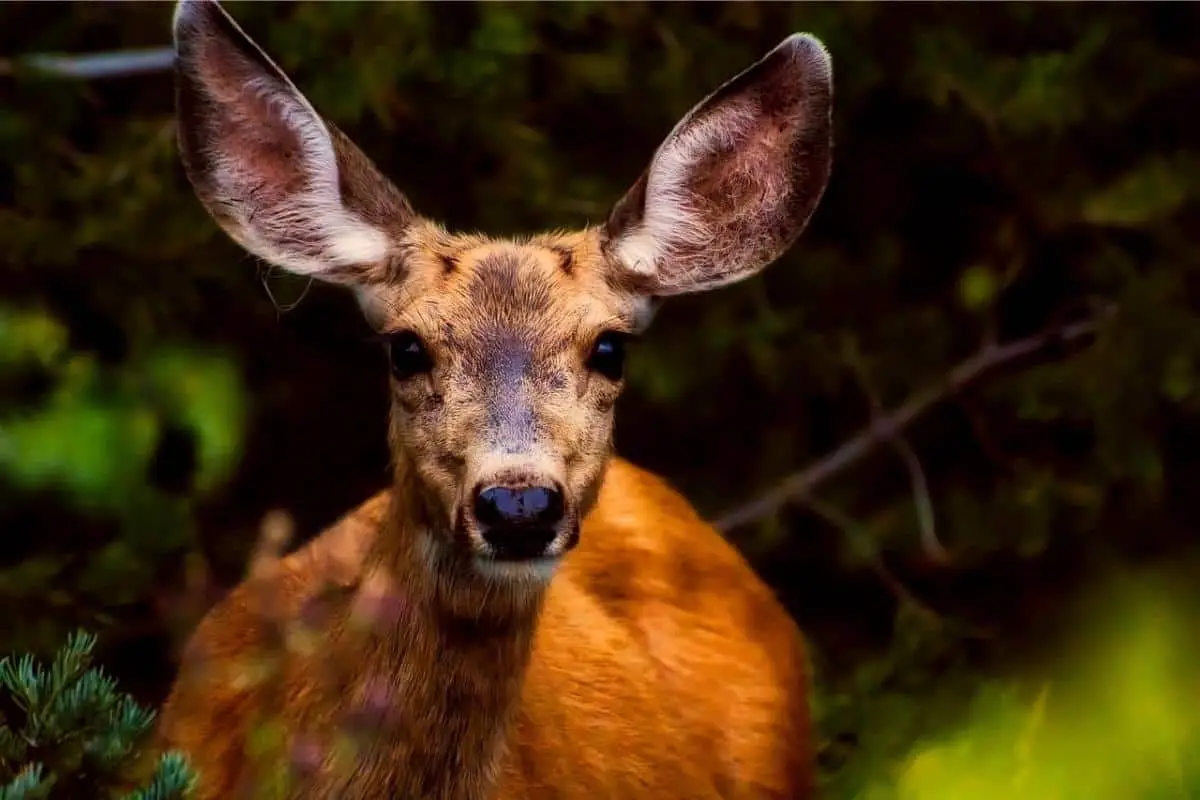Have you ever wondered why some animals have big ears? It’s not just for show – those big ears can be quite helpful! For example, big ears help animals to stay cool in hot weather by dissipating heat.
Additionally, big ears can be used as a form of communication. By flicking or twitching their ears, animals can signal their location, intentions, and emotions to others.
There are many different species of animals with large ears, and they can be found in various habitats across North America and the world. Below are 11 animals with big ears that you might spot on your next hike!
Animals with big ears
1. Mule Deer

Scientific Name: Odocoileus hemionus
The mule deer is a species found in North America, closely related to the white-tailed deer. It’s also the state animal of Utah. Its name comes from the fact that its ears look like a mule’s.
It’s a popular game animal, hunted for its meat and antlers. The mule deer can move each of its ears independently to help it listen for predators such as cougars, coyotes, wolves, and mountain lions. You can find mule deer in various habitats, like forests and grasslands.
2. Black-Tailed Jackrabbit
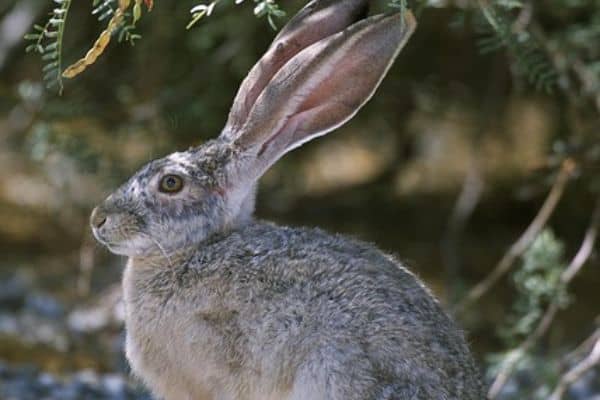
Scientific Name: Lepus californicus
Also known as the American hare, the black-tailed jackrabbit is a species of rabbit found in the western and central United States and Mexico. You can find these animals in deserts, prairies, and on farmland.
They get their name from their black-tipped tail, and they are the largest species of rabbit in North America, weighing up to six pounds. When predators are around, the black-tailed jackrabbit can run up to 45 miles per hour and jump up to 15 feet high!
3. California Leaf-Nosed Bat

Scientific name: Macrotus Californicus
The California leaf-nosed bat is a small, brownish-grey bat with a distinctive nose and large ears. It uses the nose leaf to direct sound waves towards its prey, which it locates using echolocation.
Its large ears serve an essential function in thermoregulation. The blood vessels in the bat’s earlobes are very close to the surface, allowing them to exchange heat quickly. This helps the bat to stay cool in hot weather and warm in cold weather.
The California leaf-nosed bat feeds primarily on moths and other small insects. It roosts in caves or beneath the loose bark of trees during the day and in trees or on the ground at night.
4. Caracal
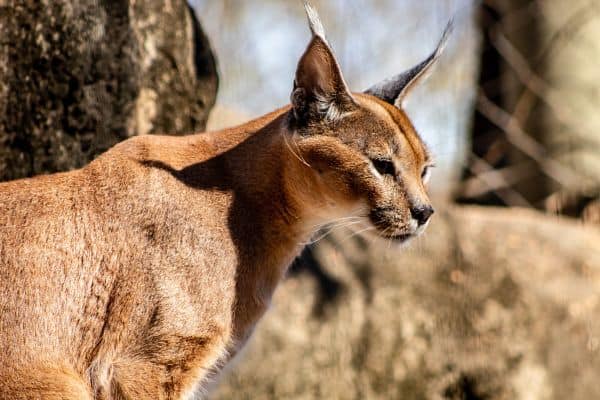
Scientific name: Caracal caracal
Also known as the desert lynx, the caracal is a medium-sized wild cat primarily found in Africa, the Middle East, Central Asia, and India.It is characterized by its long legs, short face, and large ears. It is an agile creature that can leap to great heights and run at high speeds.
The caracal is a nocturnal animal that hunts rodents, birds, and small animals. It’s also shy and elusive and is seldom seen by humans. This is partly due to its habitats, which are often in remote areas. The caracal has been known to attack humans if provoked, but such incidents are rare.
5. Galago or Bush Babies
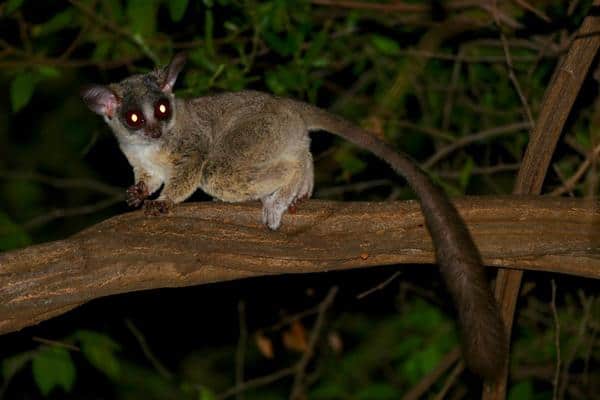
Scientific name: Galagidae
Bush babies are nocturnal, meaning they sleep during the day and are active at night. They use their large ears to help them hear predators and prey. Bush babies are good at jumping and can leap up to six feet in the air. They use their long tails to balance their weight when jumping from tree to tree.
Bush babies have good night vision, which helps them find food in the dark. They eat insects such as crickets, locusts, small birds, and lizards.
6. All Ears Deer (Gerenuk)
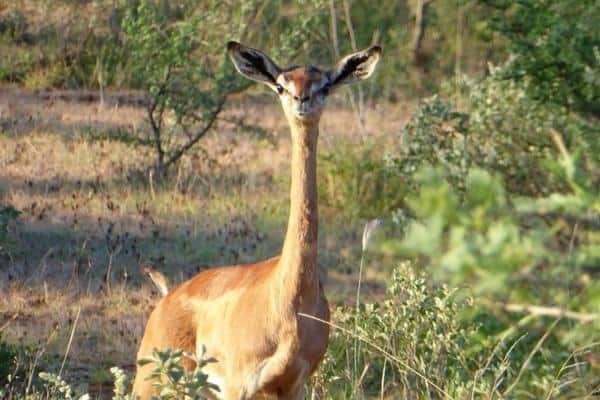
Scientific name: Litocranius walleri
The gerenuk, also known as the Waller’s gazelle, is a species of antelope found in dry thorny scrub and desert in East Africa. It gets its name from the Somali word “gurnuq,” which means “giraffe-necked.” The gerenuk is a small antelope with long, thin legs and a long neck.
It’s among the few antelope that can stand on its hind legs and reach high into trees to browse leaves and buds. The gerenuk is characterized by its large, round ears, fringed with black hair. This helps funnel sound waves to the animal’s inner ear, assisting in its acute hearing.
7. Coyote

Scientific name: Canis latrans
The coyote is a species of canine found in North and Central America. It’s smaller than its close relative, the wolf, and has a more slender build. It has large ears and a long snout for improved hearing and smell. The coyote is a proficient hunter and often preys on rabbits, rodents, and small animals.
It’s also an opportunistic eater and will scavenge for food if necessary. This includes garbage, carrion, and even dead animals. Coyotes are highly adaptable animals and can live in many habitats, including forests, deserts, and even urban areas.
8. Bilby
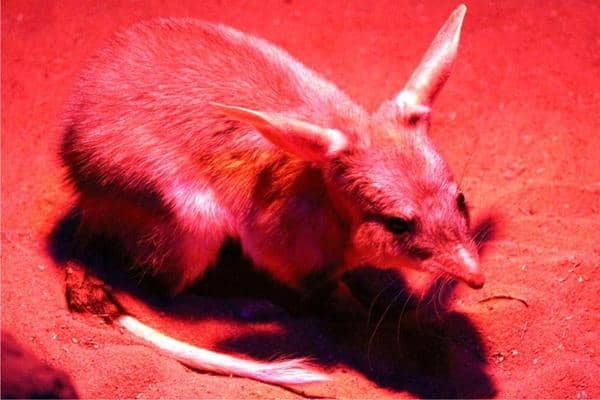
Scientific name: Macrotis
The bilby is a small, nocturnal marsupial found in Australia. It has long, pointed ears and is grey with white fur on its belly. Bilbies have strong hind legs, which they use to hop around the desert. They can jump up to three feet high and run up to eight miles per hour.
Bilbies are excellent diggers and use their long claws to excavate burrows. These burrows can be up to three feet deep and six feet wide. They use them to shelter from the hot desert sun and escape predators.
9. Bat-Eared Fox
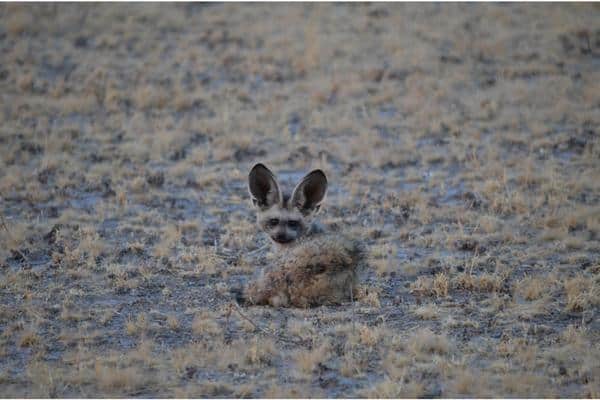
Scientific name: Otocyon megalotis
Bat-eared foxes are small, cute, and adorable members of the canid family. These small foxes mainly feed on dung beetles and termites but will also eat insects, small animals, and birds.
Bat-eared foxes live in small groups of a monogamous mated pair and their cubs in the African savanna. They share parental care among both parents, with the males doing more rearing than the females.
These small foxes can hear predators from afar thanks to their big and highly developed ears. Their ears are said to be sensitive enough to hear the sound of hatching beetle larvae.
10. The Fennec Fox
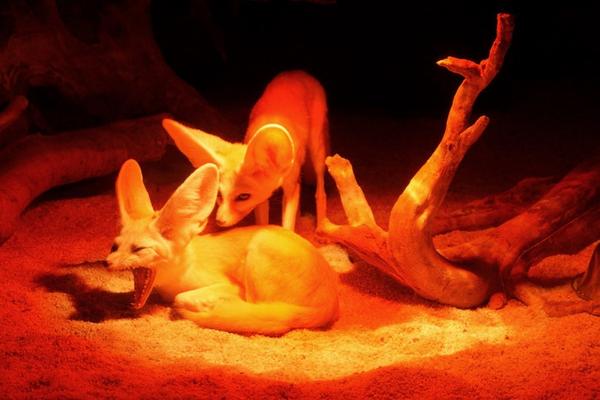
Scientific name: Vulpes zerda
The Fennec Fox is a small nocturnal fox found in the Sahara Desert. It is the smallest species of fox, and it can grow to be about 20 inches long.
It is well-adapted to life in the desert, and its large ears are one of the features that help it survive in this harsh environment.
These large ears help it hear prey animals moving underground while regulating its body temperature. It’s an omnivore that feeds mostly on eggs, insects, birds, lizards, small rodents, and rabbits.
11. Elephant

Scientific name: Loxodonta africana
The elephant is the largest living land animal with gray and wrinkled skin. They are herbivorous and only eat plants. Elephants have two finger-like extensions on the end of their trunk, which they use to pick things up.
They also have big ears, which they use to cool off their body. They also use their ears to communicate with each other. When an elephant flaps its ears, it is either angry or trying to scare something away.
Elephants are very social animals and live in groups called herds. The herd is led by a female elephant, who is the matriarch. Male elephants will leave the herd when they reach maturity.
